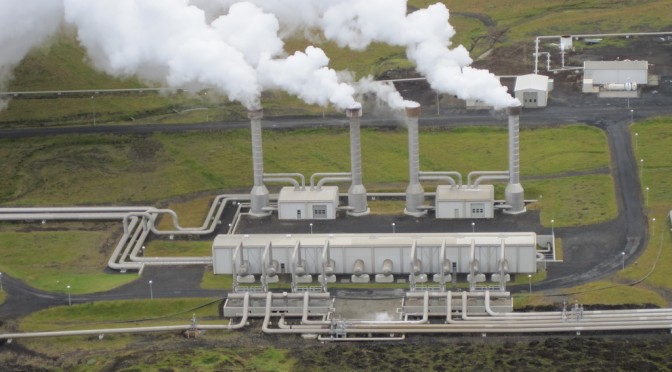Kenya on Monday launched its biggest investment in geothermal power generation with the commissioning of a 280 megawatts (MW) plant at Olkaria, Naivasha, about 100 km west of the capital Nairobi.
The project of nearly 950 million U.S. dollars will be completed in December 2014, enabling geothermal to contribute 30 percent to the country’s energy mix.
“This project is a tipping point of geothermal generation in Kenya. It is a stamp that Kenya is serious about geothermal generation,” Kenya Electricity Generating Company (KENGEN) Managing Director Eddy Njoroge said during the launch.
Kenya is estimated to have geothermal potential of 7,000 MW but currently produces just above 150 MW or about 13 percent of the total electricity production.
Geothermal resource for Kenya is located along the Rift Valley, the Coast region, Homa Hills in Nyanza and Nyambene Mountains in eastern Kenya. Geothermal generation is seen as the best source of affordable electricity for Kenya as part of its development blue print of achieving middle income status by the year 2030.
The new project has been financed by multilateral development groups including the European Investment Bank, the World Bank, German development bank KfW, and the Japanese development agency JICA.
The construction works are also being carried out by different companies including Greatwall Drilling Company of China, Toyota Tusho, Synotech Company among others.
The project is expected to place Kenya on the global geothermal map as it will be the world’s single biggest project in terms of power output.
It will also bring the country closer to claiming one of the top positions in terms of global geothermal output now rivalled by the United States at 3,000 MW and Philippines at 2,000 MW.
Kenya is seeking to generate at least 5,000 MW from its vast geothermal resource by 2030. KenGen said it will soon start generation of 65 MW from geothermal using the mobile geothermal wellhead, a new technology introduced from Iceland.
The company said it currently holds 430 MW of steam ready to be fed to the mobile geothermal wellheads once the current phase of pilot study is completed.
The Kenyan government has so far invested 329 million dollars of its own budget money in the geothermal drilling as part of efforts to increase generation to displace the expensive thermal generation.
The investment includes financing to the Geothermal Development Company (GDC) that has announced 2014 deadline for the completion of 120 wells expected to help the country produce at least additional 400 MW of electricity at the current drilling site of Menengai near Nakuru Town.
“GDC is drilling 120 wells the Menengai Geothermal Project to provide investors with enough steam for power plants which are expected to be complete by 2014,” said Dr. Silas Simiyu, the Managing Director of the state-owned GDC.
GDC was formed in 2009 by the Kenyan government to accelerate the exploration and drilling of the vast geothermal resource along Kenya’s Rift Valley to enable the country to increase the pace of benefiting from cheaper renewable energy.
The company drills the wells until the steam comes out and rents the steam to private companies who can bring in overhead generators to tap the steam, generate electricity and connect to the national grid.
Kenya has feed-in tariffs that encourage investors to participate in electricity generation projects.
“Our work is to offer investors a risk-free alternative by providing them with ready steam. All they need to do is to construct power plants and produce electricity,” said the company.
Kenya has 1,200 MW at peak demand, but which is coming under further strain from the growing demand of electricity because of an expanding economy and the rural electrification projects.
A bulk of Kenya’s electricity, or about 65 percent, comes from hydro sources, whose consistency to operate optimum is restricted by changing patterns of rainfall because of climate change among other factors.


